Although most people visit Iceland during the summer, it is a destination that can be visited all year long. Each season has its own charms and during winter you can do activities that can’t be done during summer and the other way around. This blog will explain to you what the best time is to travel to Iceland for several activities.
Although the name of this country sounds ice-cold, Iceland actually has a quite mild climate, indicated as a cool sea climate. It is situated close to the arctic circle, but the warm streams from the Atlantic ocean prevent Iceland from getting the real coldness that can be experienced in other parts of the arctic.
Video: Iceland Seasons Inspiration
Iceland in Spring
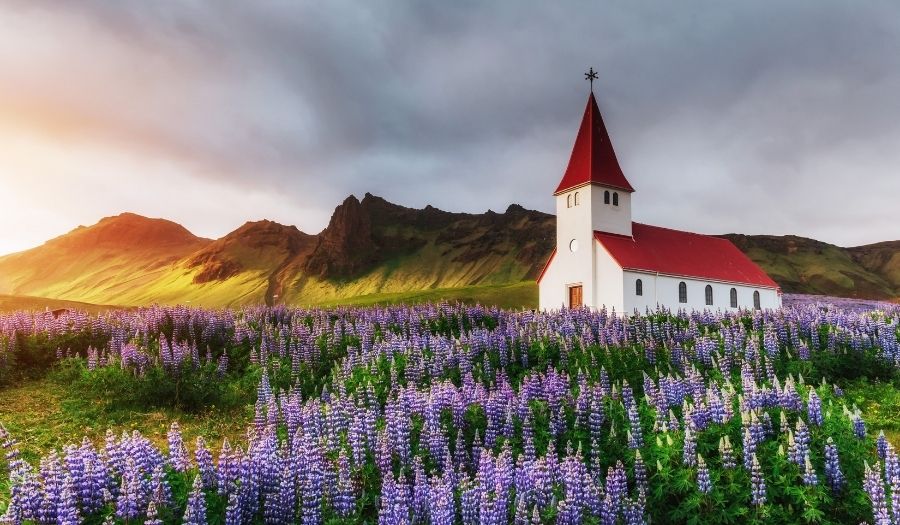
Spring is beautiful in Iceland. Lambs getting born, large fields with purple lavender in bloom, and Icelandic horses running along the road. Also, the waterfalls will be wild as they are fed by all the melting snow and if you travel to Iceland at the beginning of this season, there won’t be many other tourists around.
Weather in Spring

This season runs from the beginning of March until the end of May. The weather is shifting drastically during this season. There is quite a big difference between Reykjavik together with the South of Iceland and the Westfjords together with the North of Iceland. The below descriptions indicate the weather for Reykjavik and the South. If you are planning on exploring the Westfjords and the North during this time of the year, count on colder temperatures and more snow.
In March you can expect snow on the grounds and cold weather. Although the average temperature is around 3°C during the day, it might feel much colder because of the freezing wind.
In April it is getting a bit better. Day temperatures will be around 5°C and although you will probably still find some snow on the grounds, the biggest part will melt away during this month. That is also why April is the month that waterfalls start flowing in abundance.
May is very variable. And although the average temperature is 9°C during the day, it might also happen that temperature rise from 17°C to 20°C! During this month the wildflowers are fully in bloom, which gives a beautiful view of the vast landscapes. In the North of Iceland and in the Westfjords, there will still be snow and the flowers take a bit longer to pop out.
Daylight in Spring
During spring the daylight is coming back rapidly. At the beginning of March, you will have around 9 hours of daylight, which gives you plenty of time to explore. At the end of May, the days last up to 19 hours! Although a sunset and sunrise can still be noticed, it won’t be totally dark from half of May, as the sun stays close to the horizon.
Things to do in Spring
Spring is a beautiful time of the year to go sightseeing. With the flowers in bloom, the snow still visible on the mountain peaks, and lambs being born. Keep in mind that some roads might be closed due to snow or other weather circumstances like strong winds or a lot of rainfall. So, it might not be the best time of the year to explore the Westfjords and the highlands.
Tip: You can check the Road Conditions in Iceland on Road.is
Must Read: The Ultimate Golden Circle Route + Map
best time to visit iceland in the summer


Summer runs from June until August. You generally get the best weather during these months. It is the nicest time of the year to go camping and you will have 24 hours a daylight, which gives you plenty of time to explore Iceland! Roads will be opened and many tours can be done.
Weather in summer

Summer is generally said the best time of the year when it comes to good weather. But it wouldn’t be Iceland if some real bad weather appeared as well. Heavy storms, snow, and cold weather aren’t very usual, but can’t be excluded from typical summer weather.
The average day temperatures vary in the summer months between 11°C and 13°C during the day. But much higher temperatures, up to 25°C can be expected as well. Even sunbathing at the thermal pools is often done when the sun is shining bright and warming up the air. Don’t forget to pack some warm clothes, as it can be freezing cold as well. This will especially happen when there is a strong and cold wind or a lot of rainfall.
Daylight in summer
During the summer months, you’ll experience 24 hours of daylight. Although the sun will set and rise, it stays so close to the horizon that it will still light up the sky. Around the 21st of June, the sun will not set and it can be seen during all of the 24 hours of the day. This is called the midnight-sun. It is something magical.
Things to do in summer
Summer is the best time of the year to explore the highlands and Westfjords. During the rest of the year, the chance is big that roads are closed and you can’t reach these regions. The good weather and lots of daylight make summer the perfect time to go camping in Iceland.
Iceland in Autumn

In Autumn the tourist flow will slowly decrease, the days are getting shorter and the temperatures will drop. Birds migrate to warmer destinations and summer tours won’t be offered anymore. Still, the weather is good for exploring and most roads are still open. Especially at the beginning of Autumn. Although there aren’t a lot of trees in Iceland, colors in nature change into bright Autumn colors which make the landscapes in Iceland a true spectacle.
Weather in Autumn

Autumn is a transition phase between Summer and Winter during the months of September, October and November. Temperatures will drop and every day it feels colder. Snow starts to fall and roads will close down.
In September you might still have some really nice days, but cold nights with freezing temperatures occur more and more as the month passes. Colors in nature are beautiful and with a small layer of fresh snow, the colorful vegetation creates amazing views.
October is getting colder, with an average temperature during the day of 6°C. The wind blows regularly which makes it feel colder than it really is. Snow also starts to fall more regularly and more and more roads will close down.
During the November month, it starts to get really cold. The average day temperature is only 2°C, but freezing temperatures can also be experienced.
Daylight in Autumn
Daylight hours run back quickly during Autumn. At the beginning of September, you’ll have plenty of daylight hours, no less than 16 a day. But at the end of November, it is starting to get dark, with only 6 hours of daylight.
Things to do in Autumn
Autumn is a beautiful time of the year to go sightseeing. The Autumn colors in nature create wonderful landscapes. Half-way thru Autumn, you will also start seeing the Northern Lights. The more darkness there is, the more chance you have to see this phenomenon, which is a true spectacle to watch if they dance above your head coloring up the sky.
Check out: Top things to do in Reykjavik
best time to visit iceland in winter


Winter runs from December until January and is dark and cold, although it isn’t as cold as you might expect. It is the best time of the year to see the Northern Lights and relaxing in one of the many hot pools is a totally different experience then when you go there in the summer!
Weather in Winter

The average temperature during the day will vary between -5°C and +5°C in the South, but normally not much warmer or colder. It just might feel a lot colder when the wind blows strong. In the North it can get a little colder, day temperatures of -10°C aren’t exceptional. In the North, you will also experience more snow than in the South.
Unlike what most people think, Iceland isn’t covered in snow all winter long. It comes and disappears before it comes again. Because of the temperatures, some waterfalls freeze but others will flow all year long because of the powerful water stream.
Daylight in Winter
Winter means darkness in Iceland. Both the beginning and the end of the winter the days are as short as 6 hours. Even in-between the days are getting shorter. The shortest day is around the 21st of December and gives between 4 to 5 hours of daylight. Luckily the winter months are brightened up by the Northern Lights and the Christmas lights decorations.
Things to do in Winter
During the winter you can explore the ice caves underneath the glaciers. These are closed during summertime when the ice caves are filled with rivers that are fed by melting water. When the temperatures drop and the water turns into ice again, the caves open for visitors.
Another cool thing you can do in winter is climb a frozen waterfall. Not all waterfalls will freeze, but some do, resulting in a massive ice wall ready to be climbed.
Winter is also the best time of the year to see the Northern Lights. Although you need a bit of luck to have a clear sky. There are many hours of darkness, which give you a bigger timeframe to hunt for the lights.
Below you’ll find a selection of some really cool winter activities in Iceland. Check them out or click on more, to see what else is possible to do in Iceland.
Related Post: Best Winter Activities in Iceland
Best time for good weather

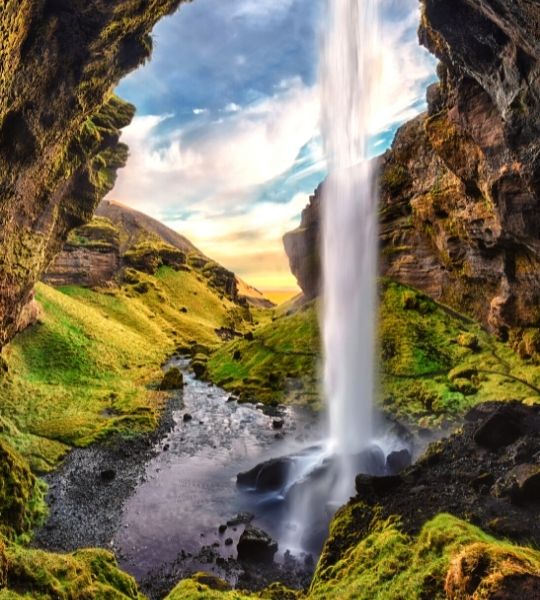
The best time to travel to Iceland for having good weather will be between half of May and half of September. Nevertheless, the weather in Iceland is highly unpredictable and fluctuates a lot from day to day.
But, let me say it like this, your best chance of having good weather during your trip to Iceland, will be during the summer months, from June until August. During these months there is a chance of very hot weather – and I mean very hot for Icelandic standards. This means temperatures can rise up to 20-25°C.
When you go to Iceland, always be prepared for summer and winter. Pack some warm clothes and an extra blanket if you go camping, but also pack your shorts and tank top for if the sun comes out!
Best time to go camping


Camping is another way of experiencing the exhilarating Icelandic nature. You don’t just see it, but you feel it, you smell it, and you hear it. Imagine laying in your tent or car, hearing the wind that rushes past you and a waterfall that clatters down in the background. Or seeing a glimpse of the Northern Lights when you stick your head outside during a clear night.
Then in the morning, you feel super fresh, waking up in the cold but oh so fresh air. Breathing in that air and smelling pure nature and absolutely nothing else (unless you are very lucky and your partner is preparing pancakes for breakfast!).
Camping is nicest when you have some good weather, so that would definitely be during the summer months. On the other hand, camping is cheaper if you go just outside high-season. Car and campervan rentals will be cheaper, just like the campsites. The sites will also be less crowded.
Related Post: The Only Iceland Camping Guide You Need
best time to visit iceland for northern lights 2022

You need a couple of conditions to be able to see the Northern Lights and one of them is a dark sky. This means during summertime when you have 24 hours of daylight (half of May until the beginning of August), your chance of seeing the Northern Lights is absolutely 0%. It might be out there, but you just can’t see it.
The more time passes by after summer, the darker it gets and the higher the chance of seeing the Northern Lights. We have been in Iceland from the beginning of August until the end of October and have seen the Northern Lights since mid-August. However, the Northern Lights we’ve seen in October were much more powerful than what we saw in August!
So, your best time to visit Iceland to be able to see the Northern Lights will be from the end of September until the end of March.
Check out: Top spots to see the Northern Lights in Europe
best time to visit iceland for whale watching
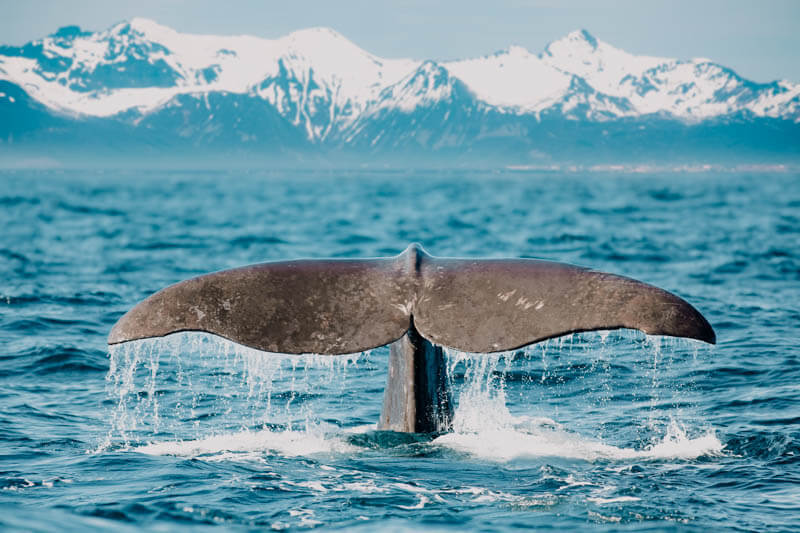
Whales are spectacular creatures. Especially the curious ones that come close to the boat and give a real show by jumping out of the water and splashing up water with their huge fins.
Some whales can be seen all year round, like the Harbour Porpoise and the Humpback whale. The best time of the year for whale watching in Iceland depends on where you go:
- North Iceland: March until September
- South Iceland: All year long
- West Iceland: March until October
You might also like: Whale Watching Iceland: This is What You Need to Know
Best time to see Puffins


Puffins are the cute black and white birds, characterized by their colorful beak and bumbling fly behavior. Iceland is the breeding home for about 60% of the world’s Atlantic puffins and so a perfect place to spot these birds.
Puffins will arrive in Iceland from the beginning of April and will leave by the end of August or the beginning of September. The best time to visit Iceland to see them is between May and August when they are in abundance in Iceland.
Must Read: The Amazing Puffins Iceland Guide: All you need to know + map
Best time to visit the Blue Lagoon (& other hot pools)

The Blue Lagoon can be visited all year round. The water temperature is always between 37°C and 39°C, which makes it feel like taking a hot bath. During a hot summer day, you might prefer a colder pool to cool off a bit and during winter you might want to keep your head under the water as well to avoid feeling the coldness of the wind.
One thing is for sure, the Blue Lagoon is always busy. During summertime even more than during the winter season. If you want to avoid the crowds, book a spot in the early morning (first available time slot) or late in the evening.
In my opinion, the best time to travel to Iceland and visit any hot pool is either during Spring, Autumn or Winter. With a bit of luck, you might gaze the Northern Lights from the hot pool. The cooler weather contributes to making it a real experience, as at a certain moment you really have to leave the warm water, to cross the cold air, towards the warm showers before you get dressed. Don’t like the coldness? Go during summertime, but be prepared for extra crowds.
Check out: 25x The Best Hot Springs Iceland to Add on Your Bucket List
best time to visit iceland for hiking

Iceland is beautiful all year round. The rough, wild and untouched landscapes are a treasure for the eye. This country is unique when it comes to nature and a lot of things you’ll see in Iceland, you won’t be able to see anywhere else in the world. So, sightseeing can be done at any time of the year.
Sightseeing is enjoyed most when nature is at its very best. During spring and autumn, the Icelandic nature changes into a real spectacle. Spring brings a lot of colorful flowers and Autumn brings the characteristic Autumn colors into the landscapes.
To combine these beautiful times of the year, with some good weather, the best time for sightseeing will be either from the beginning until half of May, or half until the end of September. Don’t forget to check the Ultimate Hiking Guide of Iceland full of information of Hiking in Iceland.
Best time to avoid crowds

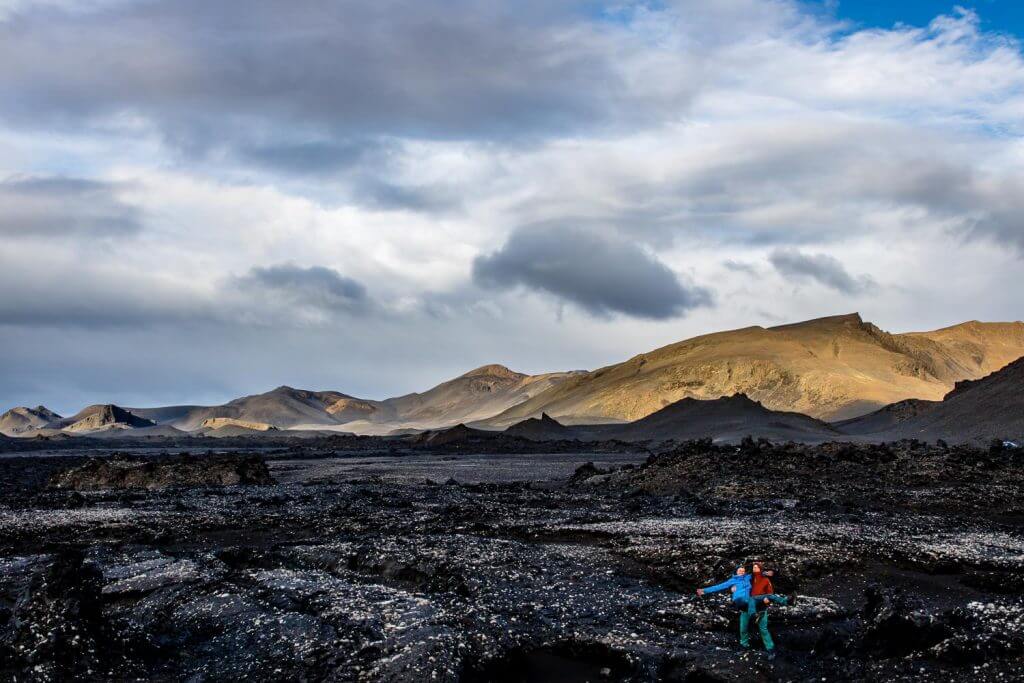
The summer months, and especially July and August, are the busiest months in Iceland. The European schools have holidays and the weather in Iceland is at its best. Expect big crowds at all highlights around Iceland. Large tour buses driving on and off carrying big groups of tourists to let them take pictures or guide them around.
Winter is the calmest period in Iceland (outside of the Christmas & NYE holiday period) as it is dark and it can get really cold. Nevertheless, wintertime a beautiful time of the year to explore Iceland.
Spring and Autumn is also very doable when it comes to crowds. The later in spring and the earlier in Autumn, the bigger the crowds, but nothing compared to the summer months.
Best time to save money
Iceland only knows two seasons when it comes to prices: High-season and off-season. As you probably already expected, high-season is during the summer months, when most of the tourists visit Iceland.
Prices start to go up from mid-June and fall again mid-September. The absolute cheapest rates for flights and accommodation are during the months January and December, outside the 2 Christmas and NYE holiday weeks.
So, if you are looking for the cheapest period to travel Iceland, it will be between December and February, outside the winter holidays.
Pin for Later

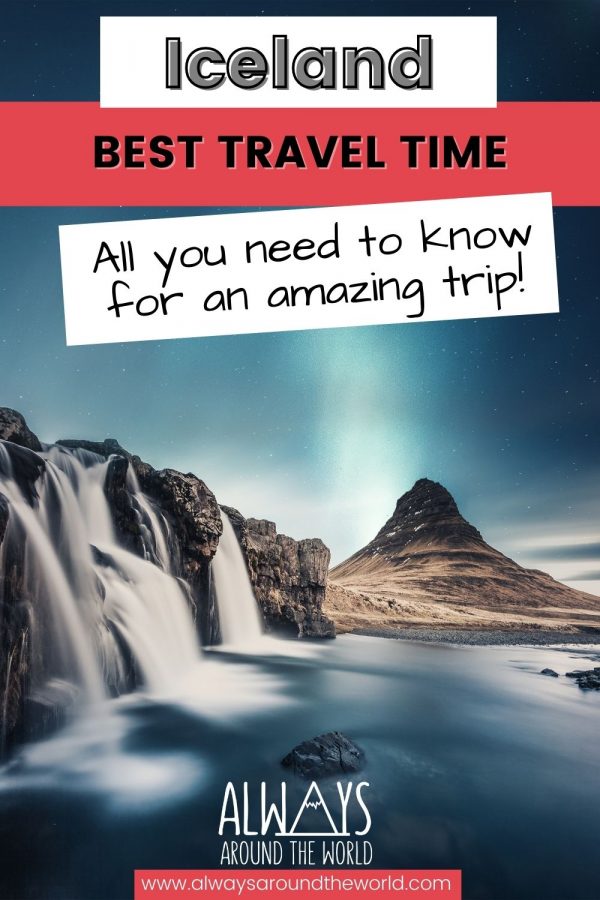
We like to hear from you
Hopefully, this blog post helped you to decide when you want to plan your trip to Iceland. Have you been to Iceland and do you want to share your experience or do you have a question? Please leave a comment below.
And don’t forget to check out what you can explore in Iceland!



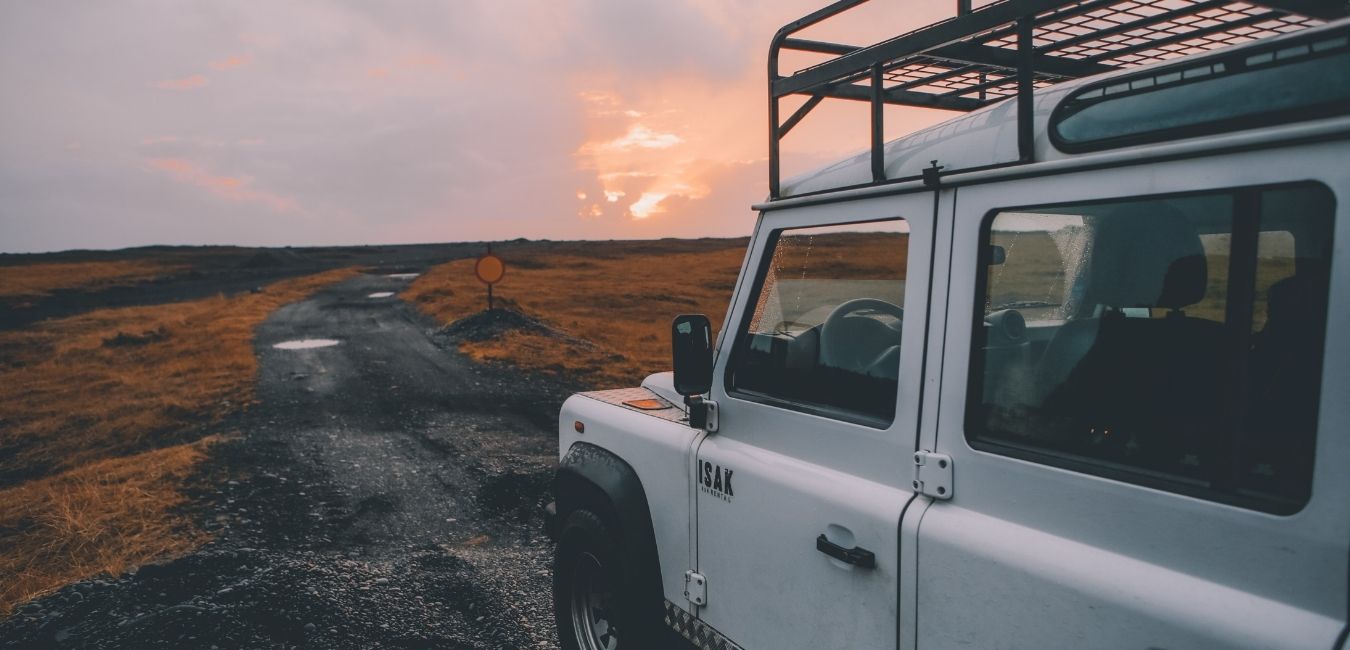
1 thought on “Best Time to Visit Iceland Guide 2024: For all activities”
This really helped me a lot!